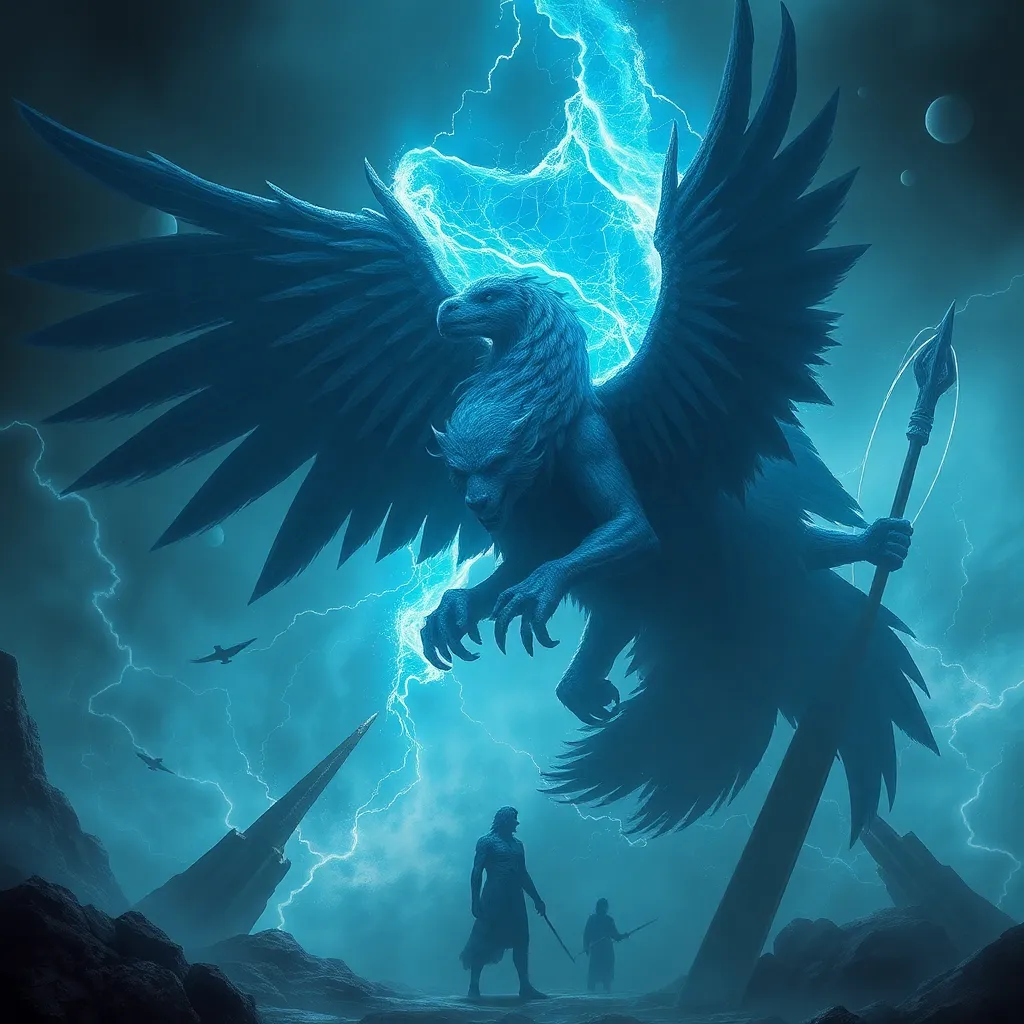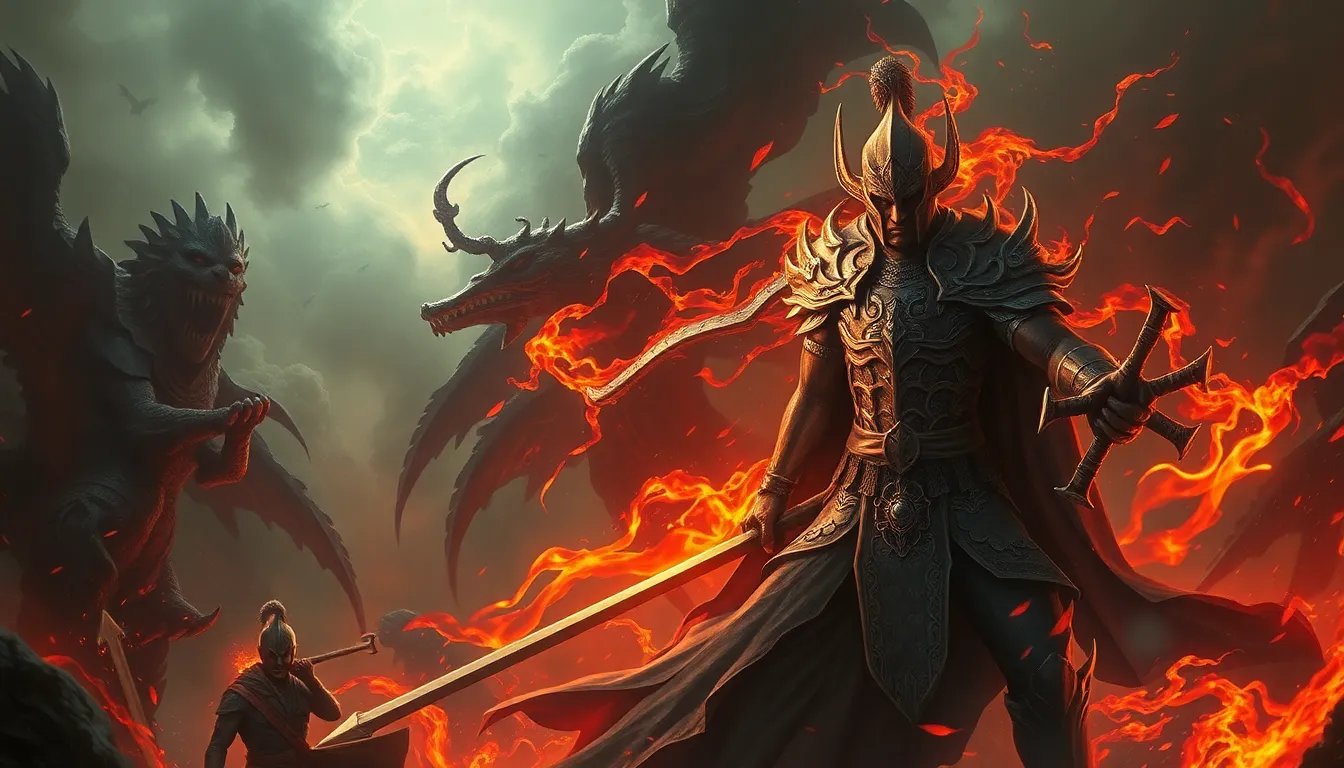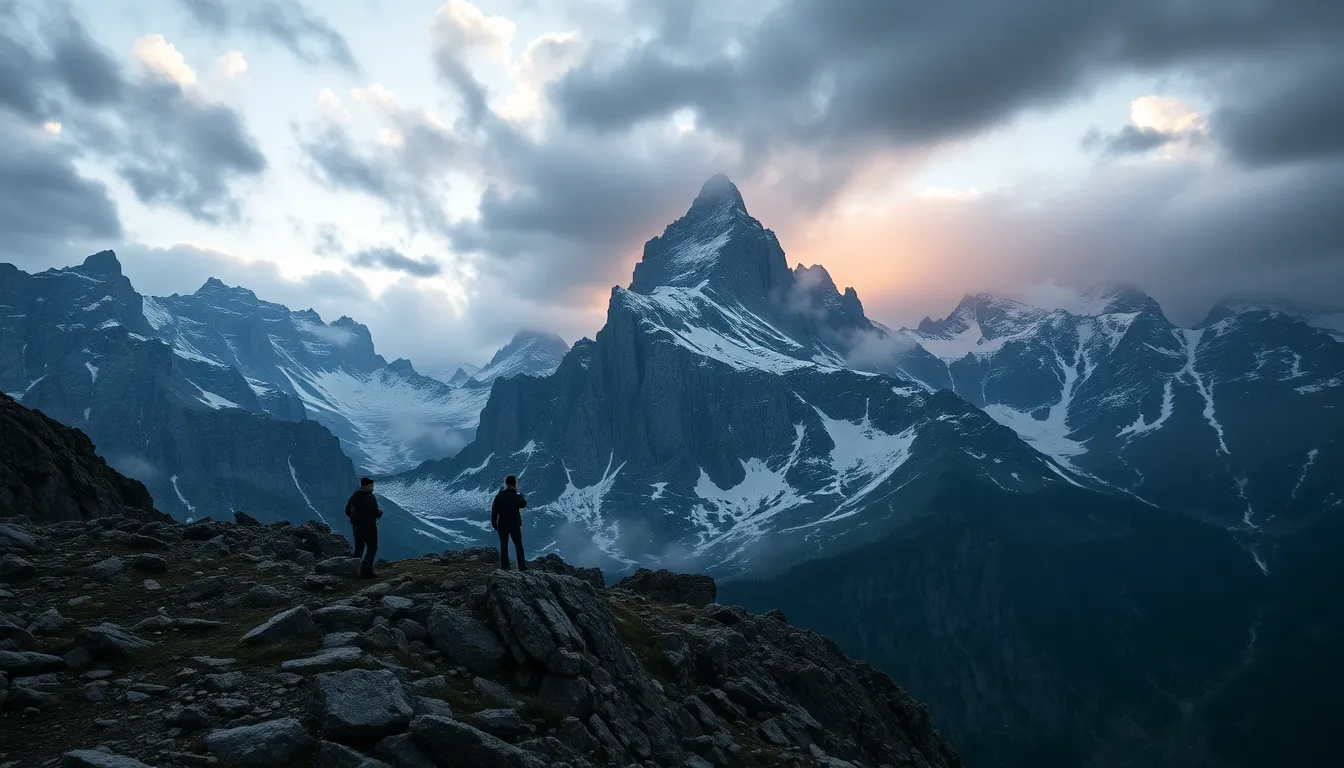The Peryton and the Gods of the Storm: Exploring Mesopotamian Concepts of Power
I. Introduction
Mesopotamian mythology, one of the oldest in human history, serves as a reflection of the complex interactions between humanity and the forces of nature. Emerging from a region that saw the rise of some of the earliest civilizations, this rich tapestry of myths and legends provides insight into the beliefs, values, and societal structures of ancient Mesopotamian people. Within this mythological framework, various creatures and deities symbolize significant aspects of life, death, and the natural world.
Among these fascinating figures is the Peryton, a mythical beast that captivates the imagination with its unique characteristics and symbolic significance. While the Peryton may not be as widely known as other mythological creatures, its connections to the storm gods of Mesopotamia reveal deep insights into the culture’s understanding of power, chaos, and nature.
This article aims to explore the interplay between the Peryton and the storm deities in Mesopotamian mythology, examining how these elements collectively shape the civilization’s worldview.
II. The Peryton: A Mythical Beast of Mesopotamia
A. Description and characteristics of the Peryton
The Peryton is often depicted as a horned creature resembling a stag, with wings that allow it to soar through the skies. Its dual nature—being both terrestrial and aerial—embodies the connection between the earth and the heavens, a theme prevalent in Mesopotamian cosmology. The creature is described as having a unique form, blending features of various animals, which adds to its enigmatic presence.
B. Symbolism associated with the Peryton
In Mesopotamian culture, the Peryton symbolizes several key themes:
- Power: The ability to traverse both land and sky signifies a mastery over different realms of existence.
- Chaos: The Peryton’s unpredictable nature reflects the tumultuous forces of nature, particularly storms.
- Transformation: As a creature that embodies both beauty and danger, it represents the duality of creation and destruction.
C. The role of the Peryton in Mesopotamian stories and folklore
The Peryton appears in various Mesopotamian legends, often as a formidable adversary or a guardian of sacred spaces. Its presence in these narratives serves to highlight the unpredictable and often perilous nature of the world, reminding individuals of the power of the gods and the forces that govern their lives.
III. The Pantheon of Storm Gods
A. Overview of key storm deities in Mesopotamian mythology
Central to Mesopotamian belief systems are the storm gods, who wield significant influence over both the natural and agricultural worlds. Two of the most prominent storm deities are:
- Enlil: Known as the Lord of the Wind, Enlil is revered for his power over the air and storms. He is often depicted as a god of authority and governance.
- Adad: The god of storms and rain, Adad is associated with fertility and agriculture, critical for the survival of Mesopotamian societies.
B. Attributes and symbols associated with these gods
Enlil and Adad are commonly depicted with attributes that symbolize their powers:
- Enlil: Often shown with a horned cap, representing divinity, and wielding a staff that commands the winds.
- Adad: Associated with thunderbolts and rain, often depicted with a bull, symbolizing strength and fertility.
C. The cultural importance of storm gods in agricultural societies
In agricultural societies, the storm gods held tremendous significance, as they were believed to control the weather, which directly affected crop yields and sustenance. Rituals and offerings to these deities were commonplace, demonstrating the people’s reliance on divine favor for their livelihoods.
IV. The Interconnection Between the Peryton and Storm Deities
A. Mythological narratives linking the Peryton to storm gods
In various myths, the Peryton is depicted as a creature that can either serve the storm gods or act as a harbinger of chaos. These narratives often illustrate the precarious balance between order and disorder in the natural world, with the Peryton embodying the unpredictable elements of storms.
B. The Peryton as a symbol of power and chaos in the natural world
The Peryton’s dual nature reflects the inherent chaos of storms, representing both creativity (in the form of life-giving rain) and destruction (through violent storms). This complexity illustrates the Mesopotamian understanding of the natural world as a realm governed by powerful forces beyond human control.
C. How the Peryton embodies the duality of creation and destruction
Through its association with storm deities, the Peryton symbolizes the continuous cycle of life, death, and rebirth. Storms can bring fertility to the land but can also result in devastation, mirroring the Peryton’s own nature as both a protector and a destroyer.
V. Rituals and Worship Related to Storm Deities
A. Overview of religious practices honoring storm gods
Rituals dedicated to storm gods often involved offerings of food, livestock, and prayers for favorable weather conditions. Temples dedicated to Enlil and Adad served as centers for worship and community gatherings.
B. The significance of the Peryton in rituals and offerings
While the Peryton may not have been a primary figure in worship, its symbolic presence in rituals served to reinforce the beliefs surrounding the storm gods. Offerings might include representations of the Peryton, reinforcing its role as a mediator between the divine and the earthly realms.
C. Examining the connection between weather phenomena and divine power
Weather patterns were often interpreted as manifestations of the gods’ will, with storms seen as both blessings and curses. The Peryton, with its stormy associations, symbolized the unpredictability of these divine forces.
VI. The Cultural Influence of the Peryton and Storm Gods
A. The impact of these myths on Mesopotamian art and literature
Mesopotamian art and literature frequently depicted themes of storms and chaos, with representations of the Peryton as a central figure. These works served to convey the power of the gods and the complexity of the natural world.
B. The legacy of storm gods and the Peryton in later cultures
The influence of Mesopotamian storm gods and the Peryton can be traced through various cultures, with similar themes of chaos and power appearing in later mythologies, including those of the Greeks and Romans.
C. Modern interpretations and representations in popular culture
In contemporary culture, the Peryton and storm gods continue to inspire art, literature, and media. These figures are often reimagined in fantasy settings, symbolizing the enduring fascination with the interplay of power and nature.
VII. Comparative Analysis: Mesopotamian Concepts of Power in Other Civilizations
A. Similarities and differences with other ancient mythologies
When comparing Mesopotamian mythology with other ancient mythologies, such as those of Egypt and Greece, several similarities emerge:
- Powerful deities governing natural phenomena.
- Mythical creatures embodying chaos and order.
However, differences exist, particularly in the way these cultures approached the relationship between humanity and the divine, with Mesopotamian narratives often emphasizing the unpredictability of the gods.
B. The universal themes of power, chaos, and the natural world
Across various cultures, the themes of power and chaos resonate deeply, reflecting humanity’s struggle to understand and navigate the forces that shape their existence. The Peryton and storm gods exemplify these themes within the Mesopotamian context.
C. Insights gained from comparative mythology
Examining the Peryton and storm deities alongside similar figures in other mythologies provides valuable insights into the universal human experience of grappling with nature’s power and the quest for understanding in a chaotic world.
VIII. Conclusion
In conclusion



